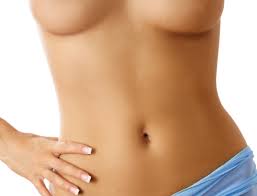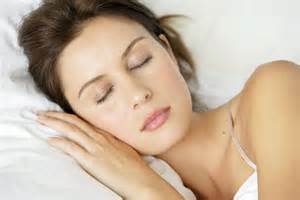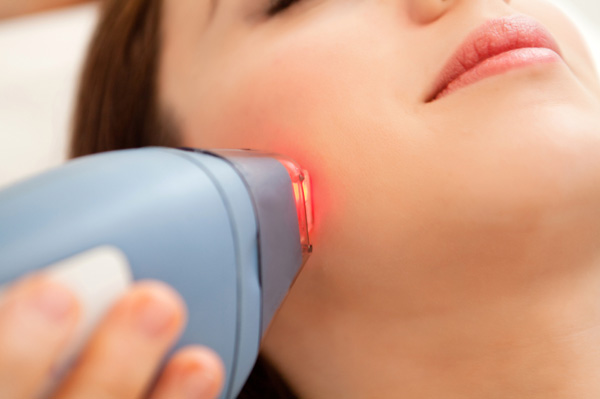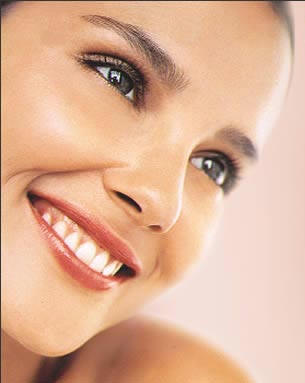By Sandra Tyler
11 Nov, 2015
Face Lift, facial rejuvenation, Laser, skin care
Chemical Peel, Erbium Laser, face lift recovery, facelift, Facial Rejuvination, IPL Laser, Laser, laser treatment, Recovery
Looking Your Best Afterwards; Post-Surgical Makeup Techniques
You may be a little concerned about what you’ll look like while you’re still healing. Bruising, swelling, pigment abnormalities and visible incisions are common after many plastic surgery procedures. The following steps can help camouflage many of these telltale signs of surgical recovery.
- You should wait a few days, or possibly, as in the case laser resurfacing, two weeks or more. Of course, applying make-up to actual incision lines is always prohibited until stitches are removed and the wound has entirely closed.
- After you have your doctor’s permission, you’ll need to learn what type of make-up and application technique is best for you. The two basic cosmetic camouflage techniques are concealing, which hides bruises or scars and neutralizes red or yellow tinted skin, and contouring, which helps hide swelling while enhancing your best features.
- Concealing those marks and color inconsistencies can be done with two products: foundation and concealer. For your foundation, choose a thicker, heavier product for those areas that are discolored, and perhaps another, lighter foundation for other areas of the face. (It’s often difficult to find a color that looks good on the entire face anyway.)
- The best concealers are pigment-rich products that are thick and dry to the touch. (Good choices are MAC Studio Conceal and Correct Concealer Duo and Laura Mercier Secret Camouflage both available at Macy’s they are terrific too!) These are a little more difficult to apply than concealers that are waxy or creamy, but they have the advantage of staying put – and that’s what you need most from a concealer.
- To get the best color match, the two-toned concealer set is best, one concealer that closely matches your skin tone and a second concealer that has a slightly more yellow tone. The yellow tint will help to cancel out any red or blue tones you want to minimize. But don’t go overboard! Really yellow or green shades will just look like yellow or green marks on your skin!
- Under all makeup, use a light moisturizer that contains an appropriate level sunscreen. Sunscreen is essential, especially, after procedures like a chemical peel or laser resurfacing, which uncover new layers of skin. Apply the screen first, foundation second, and concealer third.
- Apply small amounts of make-up at a time, you can always add more. Adding more make-up is much easier than rubbing off excess, especially if the area is still sensitive to touch.
- Contouring, the second camouflage technique uses different shades of make-up to create illusions of highlights and shadows. Manipulating these illusions can enhance certain features while disguising swelling. You’ll need three or four different shades of foundation. Stick, powder or cream foundations work best. Simply apply lighter colors wherever you want an area to stand out, and darker shades where you want the area to seem to recede. If your shades are too light or too dark, blend one or more colors with your fingers before applying.
- The key to successful contouring is blending. If you apply too much dark make-up, it is very difficult to blend it fully so that it looks like a natural shadow instead of a smudge of make-up.
- To enhance your cheekbones you want to put the darker make-up in the hollow of the cheek (Suck in your lips, making a “fish face” to see where the hollow is compared to the cheekbone). Then add a lighter color the actual cheekbone.
- To make a swollen nose appear narrower use a small brush to draw a thin line of the dark make-up down both sides of the nose, starting at the eye socket. Then, using make-up sponge, blend the color down the sides of your nose. Be sure to fully blend, there should be no lines of make-up showing. You may add a narrow, lighter shade down the center if you want.
- For swollen eyes, use contouring make-up to give them the appearance of greater depth. Apply shadow on your eyelid from just above the iris straight out; do not follow the downward curve of the eyebrow bone. Just underneath the arch of the eyebrow apply a lighter shade of make-up. And don’t forget to blend.
If you’re still anxious about how you look after surgery, practice your concealing and camouflage techniques.
More
By Sandra Tyler
19 Apr, 2015
Botox, Breast Augmentation, Butt Augmentation, Comfort Anesthesia, Cosmetic Getaways, Ear Surgery, Esthetician, extractions, Face Lift, facial, facial rejuvenation, facials, Featured Procedures, Fillers, hair removal, Juevederm, Labiaplasty, Laser, liposuction, Male Surgery, Misc, News & Blogs, Rhinoplasty, skin care, spa, Special Offers, Tummy Tuck
breast augmentation, facelift, lifestyle lift, lifstyle, liposuction, mommy makeover, tummy tuck
The 2014 plastic-surgery statistics will be released later today by the American Society for Aesthetic Plastic Surgery (ASAPS). Thanks to an advance peek, I can report that butts are getting bigger, while breasts are getting smaller.
Buttock augmentations are up 86 percent over 2013. Michael C. Edwards, a plastic surgeon and the president of the ASAPS notes that most women don’t want giant backsides, they just want more shapely ones. The other big news is breast revisions, which are up 30.4 percent. Many attribute that rise to aging implants in need of replacement, along with many women’s desire to switch from saline to silicone-gel-filled implants, which may not have been available when they originally had surgery. What’s more, insiders say most of these women are exchanging their old implants for smaller replacements.
The other news in the numbers is a five percent drop in overall procedures: 10,663,607 in 2014, down from 11,419,610 in 2013. The decrease was mostly in minimally-invasive procedures like Botox and fillers. No explanation for this was offered by the ASAPS, but could it be what I call injection fatigue? Many women I’ve spoken to don’t want to return again and again for refills. Surgical procedures fell only 1.5 percent from 1,883,048 to 1,764,956, a drop that the number crunchers say is not statistically significant.
Fat—and getting rid of it—is still a high priority. In recent years the top surgical procedures for women have flipped back and forth between breast implants and liposuction. In 2014, liposuction held the number one spot, followed by breast augmentation (down 8.5 percent), tummy tuck, blepharoplasty (or eye lift), and in fifth place, the breast lift. Facelifts are in eighth place.
Liposuction may still be king (or is it queen?) in the surgical department, but non-surgical fat reduction with devices such as CoolSculpting and VASERshape rose a whopping 42.7 percent, from 94,922 in 2013 to 135,448 in 2014. That number could rise even more this year if ATX-101, an injection for fat reduction under the chin, gets FDA clearance, which it’s expected to receive.
More
By Sandra Tyler
16 Mar, 2015
Esthetician, extractions, facial, facial rejuvenation, skin care
beauty sleep, Cosmetic Surgery, dark circles, facial, plastic surgery, skin care, skin repair, skin restoration
There are numerous myths about beauty and skin care that keep popping up no matter how wrong they are, yet every once in a while a beauty myth turns out to be true. Such is the case with beauty sleep. It’s a real thing, and you definitely need to be getting enough of it.
It could be you didn’t need to read what I wrote above in order to know that beauty sleep is a real thing. You know it just from looking in the mirror after not getting enough sleep. Lack of sleep causes dark under-eye circles, your skin looks less than great, and your fine lines or wrinkles appear more pronounced. In the WebMD article Are You Getting Enough Beauty Sleep? dermatologists had the following to say about beauty sleep:
“Lack of sleep causes blood vessels to dilate, causing the look of dark circles,” says dermatologist Sonia Badreshia-Bansal, MD, of the University of California, San Francisco. Sleepily rubbing your eyes doesn’t help those dark rings.
Not enough sleep can also make you more stressed, and everyone can see that tension. “It makes you look angry, tired, sad, and certainly older,” says New York City dermatologist Doris Day, MD.
What exactly is happening to your skin when you do not get enough sleep? Dr. Ellen Marmur explains in her excellent book Simple Skin Beauty: Simply put, if you sleep too little, you’re not giving your body time to repair itself. The nervous system has two states that are in balance. The sympathetic system, which is more in control while we’re awake, keeps the blood flow near the core of the body. While we sleep, the parasympathetic nervous system runs the show and blood flow shifts to the skin. Additionally, skin isn’t under attack from the sun and the elements at night. This relaxed parasympathetic state allows greater circulation and oxygen flow to the skin, or peripheral vasodilation in medical terms. This is when the skin gets a lot of internal attention and repair mechanisms go into action, much like the night workmen at Disneyland who fix and restore the rides and clean the place up before the part opens the next day. Receptors spring to life within the blood vessels and grab amino acid molecules (the building blocks) to help build more collagen, and fluid and toxins are drained.
Without enough rest, the skin doesn’t get this repair and restoration, and all that important activity isn’t being done. One example: when excess fluid near the skin isn’t transported to the bladder to be excreted, the result is puffiness. … It shows up most around the eyes because there’s less fat in that area, so water retention is more apparent.
After all this bad news luckily there is a bit of good news when it comes to sleep and your skin. According to Dr. Day our skin recovers quickly once you are able to get a good night’s rest. So just because you missed out on getting enough sleep a few nights in a row doesn’t mean that you’ve damaged your skin for good. And just how much sleep do you need? That varies from individual to individual. Some people do fine with only 7 hours of uninterrupted sleep while others need 8 or 9 hours. That is something that you have to determine for yourself.
In order to make sure you get your much needed shut-eye create a soothing bedtime routine. Stop drinking caffeinated drinks in the afternoon, keep to a set sleep schedule as much as possible, and make your bedroom a sleep sanctuary. Your skin will thank you for it.
More
By Sandra Tyler
16 Mar, 2015
Esthetician, facial rejuvenation, facials, Laser, skin care, spa
boost collagen, broken capillaries, brown spots, facial redness, Facial Rejuvenation, intense pulse light, IPL, laser treatment, LED, light-emitting diode, photo facial, spider veins, treat acne
Laser resurfacing is a generic term for a skin treatment that uses some kind of light-based technology. Photo facials (sometimes called foto facials ) have a number of different uses, but are mostly used for treating brown spots, broken capillaries, and boosting collagen.
The two main types of technology used for photo facials are LED (light-emitting diode) and IPL (intense-pulsed light). They are completely different, so it’s extremely important to understand which photo facial technology is being used. That way you are more likely to get the results you hope to achieve.
An LED photo facial is a very gentle treatment that uses narrow spectrum light to boost collagen, which creates plumper, younger-looking skin, or to kill the bacteria that causes acne. This type of photo facial is more likely to be found in a day spa with a serious focus on esthetics.
LED photo facials are painless, cool and relaxing, and (unlike IPL or laser treatments) carry no risk of burning. The best results come after a series of photo facial treatments. To begin, a series of six treatments with a one-to two weeks between is recommended. After that, maintain with a treatment every month or two. It can be part of a facial or a stand-alone treatment.
LED photo facials are a good choice for people who want to boost collagen or treat acne. Their collagen-boosting, facial rejuvenation properties have been proven with medical research. The results won’t be as dramatic as plastic surgery, but it’s a gentler, more natural, less expensive way to go.
Medical spas have IPL (intense-pulsed light), which is a type of laser treatment, a photo facial. An IPL photo facial can treat a variety of skin conditions such as brown spots, broken capillaries, spider veins, and facial redness. An IPL photo facial delivers a bright blast of light at very high energy levels through a hand-held device. While some IPLs have cooling devices, it can be uncomfortable, even painful.
An IPL photo facial is the better choice if you have brown spots, broken capillaries or overall redness, called diffused facial redness. The number of IPL photo facials you need will vary depending on the condition you’re treating, the results you want, and how your skin responds.
Photo facials work best in conjunction with a regular skin care routine that you develop with your esthetician.
More
Some people have beautiful skin naturally, and some have to work at it. But clear skin is within the reach of everyone.
If you have blackheads, clogged pores and acne, it’s best to work with a good esthetician to clean up your skin with regular facials. She or he will recommend products that will help keep your skin clear. The products are more expensive, but they use better ingredients and are more effective and than the products on the drug store shelves.
If you’re young and your skin is beautiful and clear, don’t mess it up with overly aggressive treatments (i.e., destroying your skin with apricot kernel scrub). Again, having a quality skin care routine from a young age is important, and a good esthetician can help you set that up. The products you use can change depending on the season, where you live, your age, and your individual skin conditions.
Here are seven other habits you need to keep your skin beautiful:
- Eat a healthy diet with lots of fruits, vegetables and leafy green. Good nutrition is the basic building block of healthy skin.
- Drink plenty of water every day. (I fill a carafe to remind myself.)
- Cut out skin-damaging habits like smoking, excessive drinking, tanning booths and excessive sun exposure.
- Search out a good esthetician by asking friends and doing some research. Then work with her (or him) on a regular basis. Get a professional facial to deep cleanse your skin and review your product choices at least four times a year, as the seasons change. Every four to six weeks is ideal.
- Throw away the soap and use quality products that are right for your skin type. Discuss your home skin-care routine with an esthetician. If you can’t afford all the skin-care products right away, ask the esthetician which are most important to start. Invest in additional products as you can.
- Give yourself a home facial as often as once a week.
- Wear sunscreen, even on cloudy days and in winter. Use a good-quality, high-SPF, full-spectrum sunscreen. Sun damage is the single most important cause of premature aging. I use Ti-Silc Sheer SPF 45Sunblock compare prices. It’s reasonably priced and doesn’t sting sensitive skin. Remember to put sunscreen on exposed areas like the back of your hands, neck and chest. They’re often the first place to show your age.
More
By Sandra Tyler
16 Mar, 2015
Esthetician, facial, facials, skin care, spa
blackheads, clogged pores, facial, skin care, skin type, spa, treat yourself
How often you should get a facial depends on your skin type — normal, combination, dry, or oily. If you have oily, acne-prone skin with breakouts, blackheads and clogged pores, you should get a facial every two weeks until it is cleared out and calmed down. As you skin improves, you can stretch it out longer until you’re on a schedule where your skin stays relatively clean and clear. If you have normal, combination, and dry skin, a once-a-month facial is usually fine.
Skin condition is whatever the esthetician notices at the time of your facial — dryness, dehydration, redness, blackheads, dull skin, etc. You might come more often than monthly if you have acne, a lot of blackheads or whiteheads you want to get cleared out, or if you have skin that would benefit from a series of treatments like peels, light therapy, or microdermabrasion.
Other Factors That Affect How Often You Should Get A Facial
- Skin Care Goals. If you want to have your best possible skin for a lifetime, find a great esthetician early in life, get on a good skin care regime, and follow it. Not everyone puts a high priority on personal appearance.
- Age. Unless they have oily skin and breakouts, younger people can usually get facials less frequently because their skin naturally generates new cell growth faster. When you’re young, your biggest priority is to be on a good skin-care regime, keep the skin clear of blackheads, and have a strategy to deal with breakouts. As you age, you might go more often and spend more on treatments that are done in a series, such as peels, light therapy, or microdermabrasion.
- Budget. Income and budget affects how much money you have available for facials and skin care. Try to at least get a facial once every three months, and make the investment in quality products.
- Where You Live. Urban environments have more pollution that make your skin dirtier. If you’re prone to blackheads, you might need to be rigorous about your once-a-month schedule instead of stretching it out to six weeks.
Is There Such A Thing As Too Many Facials? Yes! Unless you have oily skin that needs clearing up or you’re doing a series that requires you to come in every week or two, once a month is sufficient. You can sensitize your skin if you overdo it.
More






